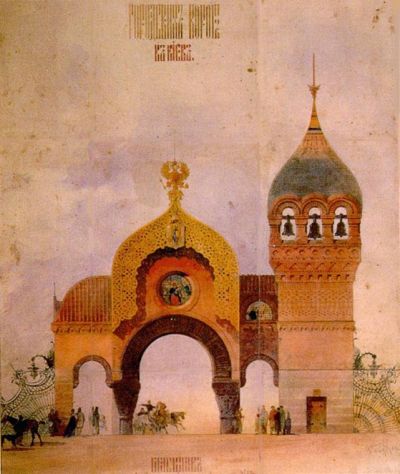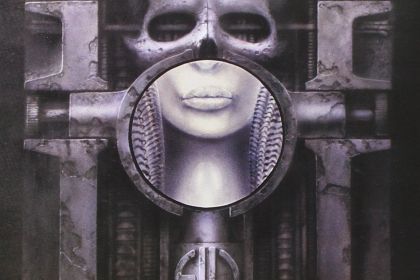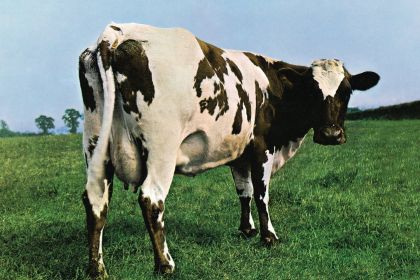PIANO
Mussorgsky's pictures redrawn for the prog rock exhibition

Plan for a City Gate in Kiev by Viktor Hartmann
Composer: Modest Mussorgsky
Band: Emerson, Lake & Palmer
Piano suite Pictures at an Exhibition written by the Russian composer Modest Mussorgsky in 1874 retains its innovative approach even by modern standards. Composed of ten pieces describing the author's impressions of visiting an art gallery, the work remained unpublished during Mussorgsky's lifetime.
In 1886, five years after his death, the first publication of the work, edited by his friend Nikolai Rimsky-Korsakov, saw the light of day. However, it differed significantly from Mussorgsky's latest draft due to the fact that the chief theorist Rimsky-Korsakov believed Mussorgsky's music contained many mistakes and inaccuracies and it was his job to fix them.
At the beginning of the 20th century, Maurice Ravel attracted wide public attention to the Pictures at an Exhibition by creating an orchestration for the Rimsky-Korsakov's piano variation. His orchestration softened the sound even more, and the general public accepted it as the original version until the release of Mussorgsky's actual original score in 1931 which amazed musicians and listeners by the different nature of its intent.
To glue all the pieces in this work, Mussorgsky introduced a walking theme Promenade depicting the typical behavior of a gallery visitor who strolls from picture to picture, intently peering at some of them. An abstract mood in the Promenade is achieved by the melody handled in the pentatonic scale, reminiscent of the Chinese music tradition, while the observer's gait is skillfully depicted with an asymmetrical music meter.
Listen to Promenade in Bb performed by Gerhard Eckle:
Mussorgsky received the creative impulse for the suite from visiting the exhibition of designer Viktor Hartmann who is considered to be one of the founders of the Russian style in architecture. The exhibition was organized shortly after the sudden death of Hartmann with whom the composer had a close friendship.
Since many of Hartmann's works were sold directly at this exhibition, many of them did not survive. Currently, only a few paintings from Mussorgsky's piano set are identifiable.
Paris Catacombs by Viktor Hartmann:


Being a magnificent pianist, Mussorgsky was ahead of his time by embarking on such an avant-guard musical venture as Pictures at an Exhibition, a suite that most 19th-century pianists considered to be lacking the splendor of Romanticism and therefore not suitable for concert performances. However, it is not surprising that this work saw its first massive success a century later, accepted by the fertile soil of modernism and impressionism.
In the 1970s, the suite received a completely unexpected spike in popularity when the progressive rock trio Emerson, Lake & Palmer created their own interpretation of Pictures at an Exhibition, releasing the album of the same name and supporting it with large-scale concerts. The story of acquainting the pop music audience with this classical piece began when gifted keyboardist and future ELP founder Keith Emerson heard Ravel's orchestration at the London Philharmonic.
Sketches of Theatre Costumes by Viktor Hartmann:


While being under the strongest impression by his first hearing of Pictures at an Exhibition, Emerson wandered to the London publisher the very next day of the concert in search of the score. He was going to make a transcription of the orchestral suite for piano and it took him by surprise that the original score was written for piano from the start.
Emerson recalls his conversation with a publisher:
I said, “Do you have the orchestral score? I’m going to rearrange it for piano." The guy looked at me like I was really dumb and said, “You know it was originally a piano solo, right?” I said “Was it?” He said “Yeah,” and dug it out. I said, “Great, that saved me a hell of a lot of work.”
Based on Mussorgsky's piano pieces, the band created a loud and powerful arrangement for synthesizers, bass guitar, and drums. ELP also added their own variations of original work to the album, not forgetting to pepper in bits of other famous classical pieces. Finally, guitarist and singer Greg Lake, along with the band poet Richard Fraser, decided to write lyrics for a few tracks, taking the concept of a progressive rock album of the time to a new level of realization.
Keith Emerson, U.S. Tour, 1973:


In 1970, ELP made a live recording at the Newcastle City Hall which was released only the following year due to the legal conflict between the band and their label which refused to issue a classical suite on a pop record.
Pictures at an Exhibition saw many variations by famed artists before the 1970s—notably through the works of Duke Ellington and Andrés Segovia—but it was largely due to the efforts of Emerson, Lake & Palmer that the young generation familiarized itself with the world of classical music through the modern approach.
Watch Promenade by ELP filmed at the Lyceum in London in 1970:



